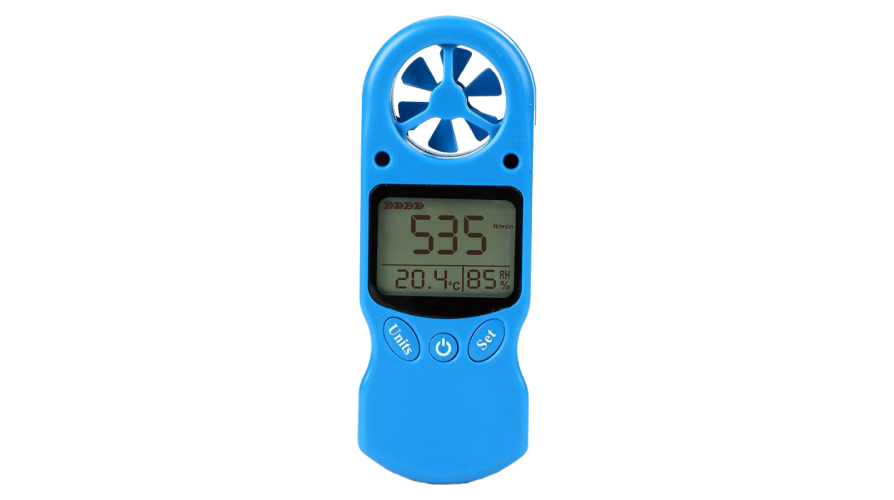Top Attributes to Look for in an Efficient Anemometer for Accurate Wind Measurement
Top Attributes to Look for in an Efficient Anemometer for Accurate Wind Measurement
Blog Article
All You Required to Know About Anemometers: Just How They Function, Why They Issue, and Where to Make use of Them
Anemometers, however usually forgotten in the world of scientific instruments, play a crucial function in numerous fields, using beneficial insights right into wind speed and air movement patterns. Comprehending the technicians behind these devices is necessary for anyone looking for to harness the power of this data. From meteorologists tracking climate patterns to engineers creating frameworks with wind tons in mind, the applications of anemometers are significant and varied. As we dive into the details of anemometer modern technology, we will certainly discover the inner workings of these devices, their significance, and the vital considerations when choosing the appropriate anemometer for particular applications.

Anemometer Essentials
An essential instrument used to measure wind speed and direction, the anemometer plays a vital function in meteorology and numerous industries. An anemometer usually is composed of three or four cups that revolve in the wind, a vane that aims into the wind, and sensors to track the rotations or motions. By calculating the rotations or motions over a details period, the anemometer can determine wind speed. The vane helps identify wind direction by aiming into the wind, supplying important information for climate projecting, aviation, maritime operations, environmental surveillance, and wind energy applications.
There are various kinds of anemometers available, consisting of mug anemometers, vane anemometers, hot-wire anemometers, and sonic anemometers, each with its unique attributes and applications. Mug anemometers are frequently made use of for fundamental wind rate measurements, while vane anemometers are favored for directional measurements.
Principles of Anemometer Operation
Structure on the foundational understanding of anemometer essentials, the concepts of anemometer procedure clarify the technicians behind wind rate and instructions measurements. Anemometers operate the principle of airflow influencing a sensor, creating it to revolve. Mug anemometers, for example, have three or more cups that catch the wind, causing them to spin much faster as the wind rate increases. The turning rate is then converted into a wind rate measurement. Vane anemometers, on the various other hand, make use of a tail or a probe that straightens itself with the wind instructions, giving a dimension of wind instructions based upon the positioning of the sensor. Hot-wire anemometers depend on a warmed cable that cools down as wind passes over it, with the price of cooling down establishing the wind speed. Ultrasonic anemometers step wind rate and instructions by assessing the moment it considers ultrasonic signals to travel between transducers. Comprehending these principles is vital for precise and reliable wind measurements in various applications.
Value of Anemometers
The relevance of anemometers in weather forecasting and different industries can not next page be overstated. Anemometers play a crucial duty in measuring wind rate and instructions, providing crucial information for weather projecting, environment research studies, ecological surveillance, and aeronautics operations. Meteorologists rely upon anemometers to collect accurate wind data, aiding them comprehend weather patterns, forecast storms, and problem timely warnings to the public. In markets such as construction, agriculture, renewable resource, and maritime procedures, anemometers are made use of to enhance processes, ensure safety and security, and enhance effectiveness. For instance, wind ranch drivers make use of anemometers to evaluate wind conditions and make best use of electricity manufacturing from wind turbines. In the maritime sector, anemometers help ship navigating by offering real-time wind info to captains, helping them make informed decisions to ensure safe voyages. Overall, anemometers are crucial devices that contribute substantially to safety, effectiveness, and notified decision-making in meteorology and a vast array of markets.
Applications Across Different Industries
In the renewable power sector, anemometers play a critical function in analyzing wind problems for wind ranch positionings, making certain ideal power manufacturing. Industries like building and construction and mining make use of anemometers to monitor wind speeds, critical for security methods, especially when working at elevations or in open-pit mines where solid winds can present risks. In farming, anemometers aid farmers in handling plant spraying by giving real-time data on wind speed to prevent drift.

Selecting the Right Anemometer for Your Requirements
For general objectives, a cup anemometer is appropriate for gauging wind speed, while a vane anemometer provides wind direction data. Hot-wire anemometers are optimal for reduced airspeed dimensions, and ultrasonic anemometers provide high precision and longevity.

Conclusion
To conclude, anemometers play a vital function in gauging wind rate and direction throughout different markets. Comprehending the concepts of anemometer procedure is vital for selecting the ideal gadget for certain demands. From meteorology to air travel, anemometers are important devices for ensuring and gathering exact data security in different applications. It is essential to think about the significance of anemometers in order to make informed decisions when selecting the most ideal gadget for determining wind problems.
There are different types of anemometers available, including mug anemometers, vane anemometers, hot-wire anemometers, and sonic anemometers, each with its special functions and applications. Mug anemometers are generally utilized for standard wind speed dimensions, while vane anemometers are chosen for directional dimensions. Hot-wire anemometers are appropriate for low airspeeds, and sonic anemometers are optimal for high-precision measurements in research study and industrial setups.Building on the foundational understanding of anemometer fundamentals, the principles of anemometer operation illuminate the mechanics behind wind rate and instructions dimensions. For basic purposes, a cup anemometer is ideal for determining wind rate, while a vane anemometer provides wind instructions data.
Report this page